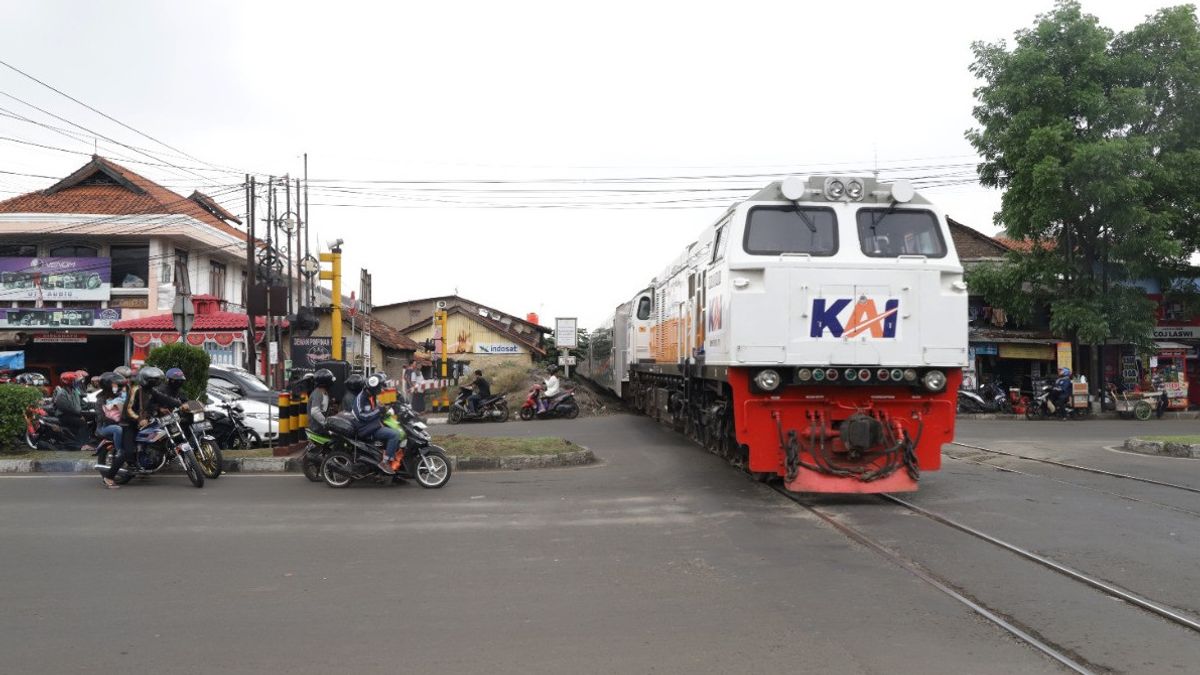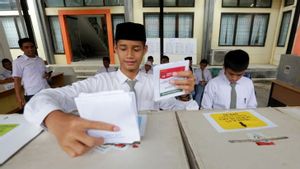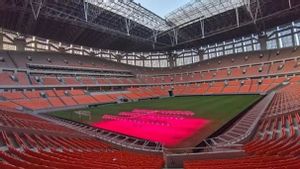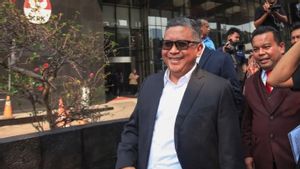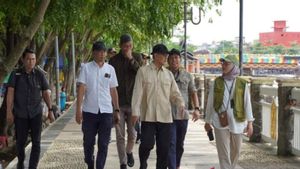JAKARTA The Brantas train collision with a trailer truck that occurred at a level crossing on Jl. Madukoro, Semarang on Tuesday night, July 18, 2023, serves as a reminder that potential danger is still threatening in Indonesian railways. Although trains are often considered one of the safest modes of transportation, the reality is that train accidents are still happening.
Not only does it cause huge losses in terms of the economy, but it also takes lives and causes serious injuries to passengers. It is important for us to understand the causes and find solutions to reduce this incident.
One of the main causes of train accidents is the human error factor, as happened in Semarang. The Semarang Police Chief, Kombes Irwan Anwar, said that the truck did not violate the crossing gate which was said to have not been closed. It's just that the truck's body was caught in the middle of the crossing, causing it to strike until a collision incident finally occurred.
"Initial information, the truck suddenly broke down on the rail. Then the driver and kernet asked the trainstop officers for help, but they didn't have time because the train was approaching," said Irwan.
Irwan added that the truck did not break through the level crossing gate. He mentioned that when the truck passed, the crossing gate had not been closed.
The accident, which was marked by a devastating fire from the truck's fuel tank, did not result in any casualties. All train passengers, drivers, truck drivers and assistants survived unharmed. However, the accident still caused losses in the form of delays in the train schedule from and to Semarang.
"On behalf of the KAI Management, we apologize to customers for the disruption of train travel and services due to this incident," said KAI Daop 4 Public Relations Manager Semarang Ixfan Hendri Wintoko in a written statement, Tuesday, July 18.
KA 112 Brantas is known to have brought 626 passengers in a series consisting of 3 executive class carriages, 6 economy class carriages and 1 generating carriage. The driver and assistant driver were reportedly safe, and none of the passengers were seriously injured.
A level crossing, or a railway line that has crossed the highway so far, has always been a problem. Even though there have been many efforts to minimize problems in a level crossing, incidents still often occur.
Field crossings always affect traffic on the highway, because the law already regulates it. Law Number 23 of 2007 article 124 concerning Railways, as well as Law Number 22 of 2009 article 114 concerning Road Traffic and Transportation requires road users to prioritize trains.
This regulation causes economic losses, which if accumulated will have a major impact. Decreased speed, congestion due to queues of vehicles waiting for trains to pass through a level crossing will certainly lead to energy and economic waste.
A study conducted by the Surakarta Muhammadiyah University (UMS) in 2009 on a level crossing on Jl. Urip Sumoharjo, Jebres, Surakarta stated that the annual loss due to congestion in the area reached nearly Rp3.5 billion.
The results of the study concluded that it was time for the crossing to be built flyovers and tunnels. However, until now Surakarta is led by Mayor Gibran Rakabuming Raka, the level crossing near Jebres Station is still as usual.
Minister of Transportation Budi Karya Sumadi in 2018 once said that level crossings should have been removed. Provincial, city and district governments are advised to build flyovers or tunnels to avoid train accidents by vehicles on the highway.
Intersections of railway and highway lines according to the Railway Law are ideally not in the same field. A level crossing is still possible, if the railway and highway lines are not congested. A level crossing according to Law Number 23 of 2007 must be licensed, if there is no permit it must be closed.
The construction of highway and tunnel infrastructure is the authority of the central, provincial, city, or district governments. Government Regulation Number 56 of 2009 article 79 states that ministers, governors, mayors, regents must conduct periodic evaluations of the level crossings in their regions. If it is based on the evaluation of a level crossing it must be closed, then the local government can do it.
From various sources summarized, the first train accident recorded in the archipelago occurred in Padangpanjang, West Sumatra on December 25, 1944. The train serving the Padang-Bukittinggi route rolled over the ravine of Valley Anai, and claimed up to 200 people. The accident became the worst accident in the railway history in the archipelago.
Then on September 20, 1968, there was a collision of KA 406 and KA 309 in the Ratu Jaya area, Cipayung, Depok. This incident claimed the lives of 116 people.
A train accident that claimed many lives next occurred in Bintaro, South Jakarta on October 19, 1987. KA 225 Local Rangkas collided with KA 220 Patas Merak. The massive collision claimed 156 lives, and is remembered as the Bintaro Tragedy.
The incident of the last train accident that claimed many lives occurred at the West Resilience Station, Brebes, Central Java on December 25, 2001. A violent collision between the Empu Jaya train and the South Malam New Style train left 31 victims dead.
Not many more incidents involve trains with highway transportation vehicles. This kind of incident occurred mostly due to violations at a level crossing. The Brantas train accident against the trailer truck in Semarang on July 18 increased the length of the list of train accidents in Indonesia.
Currently, Indonesia has entered the latest round in the world of railways. None other than the operation of the Jakarta-Bandung High Speed Train (KCJB), which is part of a long-term project for the construction of a superfast Trans Java railway, Jakarta-Surabaya.
This Indonesian railway update is a collaboration with China, and cost IDR 114.24 trillion only for the KCJB route. Although many praised it, not a few criticized the KCIC superfast train project. Critics call it a lighthouse project, have no careful planning, and are economically detrimental to the community because this project was built with a very large debt fund.
Of course, it is a very big responsibility for the Government of Indonesia to advance railways in this country. After all, railways in Indonesia must move forward. However, we still have to pay attention to small things, such as the level crossing which seems to be a shock for Indonesian railways.
اقرأ أيضا:
The English, Chinese, Japanese, Arabic, and French versions are automatically generated by the AI. So there may still be inaccuracies in translating, please always see Indonesian as our main language. (system supported by DigitalSiber.id)
